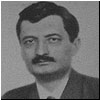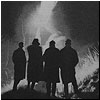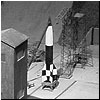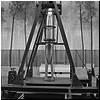German rocketry during World War II (original) (raw)
Searching for details:
The author of this page will greatly appreciate comments, eyewitness accounts, documents and imagery related to the subject. Please contact Anatoly Zak.
Related pages:
HISTORY: German research in the field of rocketry and space flight (1920-1945)

Oberth: "Father of it all"
In 1923, Professor of physics and math Hermann Oberth wrote "Die Rakete zu den Planetraumen," a fundamental work on the theory of rocketry and space travel. The book is widely credited for igniting the imagination of many future rocket enthusiasts in Germany and abroad. With its technological prowess and large educated class, Germany provided a fertile soil for the dreams about space travel.

Pioneers: Society for Space Travel
In 1927, Johannes Winkler registered Verein fur Raumschiffahrt (Society for Space Travel) or shortly VfR, in the city of Breslau, Germany. Among its first members were Max Valier, Hermann Oberth and Walter Hohmann, now legendary names in the history of early spaceflight. (213) In August 1930, German officials certified that a rocket engine called Kegelduese developed by Professor Oberth generated seven kilograms of thrust for a period of 90 seconds. It was followed by a number of small experimental rockets tested at a converted army depot near Berlin.
Rocket research by the German military
Modest funds of the Society for Space Travel limited its activities to small experimental rockets and engines. However in the spring of 1932, the Mirak series of rockets developed by a group including Nebel and Von Braun, attracted the attention of the Ordnance Department of the Army. The German military saw missiles as a potential replacement for conventional long-range guns. Despite objections of a number of prominent members of the Society, its young member named Wernher von Braun accepted the invitation to take charge of a newly created missile development lab of the German Army on November 1, 1932.

"Vengeance" weapons: V-1, V-2 and V-3
It would be hardly an exaggeration to say that the Space Age was born from the biggest catastrophe in the history of human civilization. Soon after Nazis grabbed power in Germany, all the work on rocketry was consolidated by the military, while the work of enthusiasts was quickly shot down. At the beginning of 1935, German Air Force, Luftwaffe, commissioned Von Braun and his team to develop a rocket engine providing auxiliary power to the aircraft. It was followed by the development of a full-fledged rocket plane. However, soon von Braun's team accepted another proposal from the German Army to develop a long-range ballistic missile. In April 1937, a growing team of rocket developers moved to a newly built state-of-the-art facility at Peenemunde. There, an expansive and diverse rocket development program was launched. In the meantime, German Air Force recruited another prolific engineer, Eugen Saenger (Sänger), to develop a rocket powered plane, later known as the Saenger-Bredt antipodal bomber.
HARDWARE GUIDE
Quick links
Overview of the German rocketry developed during 1933-1945:
| Name | Status | Description |
|---|---|---|
| Aggregate (A) series | ||
| A-1 | In development around 1933 | Experimental rocket with a 300-kilogram LO/alcohol engine (148, 174) |
| A-2 | Launched: 1934 December | Two rockets reached altitude of 2.5 kilometers from the Island of Borkum. (174) |
| A-3 | Launched: 1937 | A 25-ft, 1,650-ft rocket with gyro, jet rudders and actuators. Four rockets were launched from the Island of Griefswalder Oie, but all failed in flight. (148, 174) |
| A-5 | Launched: 1938 summer | A-4's predecessor. Air- and ground-launched test rocket. Equipped with gyroscopes, jet vanes and radio guidance (148) |
| A-4 (V-2) | First launch: 1942 spring | Long-range ballistic missile |
| A-4b | Launched: 1944 | Winged version of A-4 |
| A-6 | Not built | A-4-based missile burning vinylic ethers and nitric acid (169) |
| A-7 | Not built | A-5-based development rocket to test ogival-shaped wings for the A-9 missile (169)(213) |
| A-8 | Not built | A-4-based missile burning diesel oil and nitric acid (169) |
| A-9 | Under development in 1944-1945 | Long-range winged missile |
| A-10 | Conceptualized as early as 1936 (174) | A 76-ton rocket booster with the 220 tons of thrust capable of delivering A-9 stage to the altitude of 24 kilometers. (169) |
| A-9/A-10 | On the drawing board by the end of World War II | Two-stage missile |
| A-11 | Under consideration (174) | Three-stage vehicle with a manned A-9 upper stage capable of reaching Earth orbit. (174) |
| Cruise missiles | ||
| Henschel Hs 293 | August 1943 (operational) | A series of naval air-to-surface cruise missiles |
| Fieseler Fi 103 (V-1) | Aug. 30, 1942 | Cruise missile |
| Zitterrochen | Canceled around 1944 | Supersonic version of Hs-293-295 series (169) |
| Rocket-powered aircraft | ||
| Bachem BA-349 "Natter" | Pilot Lothar Sieber is killed during the first test flight on March 1, 1945. | An experimental vertically launched rocket-propelled aircraft. |
| Blohm und Voss MGRP | Project | Ramjet-powered missile guided by a manned parasite aircraft |
| He-112 | Circa 1937 | A bomber powered by von Braun's team engine |
| Me-163 Komet | - | Experimental interceptor |
| Rammschussjager Sombold SO-344 | - | Project of a rocket-powered interceptor with Walter engine (169) |
| Saenger-Bredt Antipodal Bomber | Considered during 1938-1942 | Project of the intercontinental bomber led by Eugen Saenger (Sänger) at the Air Froce research center in Trauen. |
| Zeppelin Rammer | - | Project of a solid-rocket-powered interceptor (169) |
| Antiaircraft missiles | ||
| Enzian (Gentian) | - | Solid-propellant missile |
| Hecht (Pike) | - | - |
| Hs-217 Fohn | Operational | Salvo-launched missiles (35 per launch) |
| Feuerlilie (Fire Lily) | - | - |
| Schmetterling (Butterfly)(V-3) | - | - |
| Rheintochter (Rhine Maiden) | - | - |
| Taifun (Typhoon) | In development | Small liquid-propellant missile |
| Wasserfall (Waterfall) | Developed during 1943-1945, Not deployed | Guided missile |
| Air-to-air missiles | ||
| R-4/M Orkan | Operational | - |
| R-100 BS | In development | - |
| RZ-65 | In development | - |
| RZ-7 | In development | - |
| W.Gr.21 | Operational | - |
| X-4 | Test-flown in 1944 | Developed at Bayerische Motoren Werke, BMW |
| Hs-298 | 1944 Dec. 22 | Solid-propellant missile |
| Air-to-ground missiles | ||
| Panzerblitz I | In development | Antitank missile |
| Panzerblitz II | In development | Antitank missile |
| Panzerschreck | In development | Antitank missile |
| RZ-100 | In development | - |
| W.Gr.28/32 | Operational | - |
| Battlefield missiles | ||
| Rheinbote | Operational | Unguided ground-to-ground solid-propellant missile |
| Ruhtstahl-Kramer X7 Rotkappchen | Operational | Wire-guided antitank missile |

